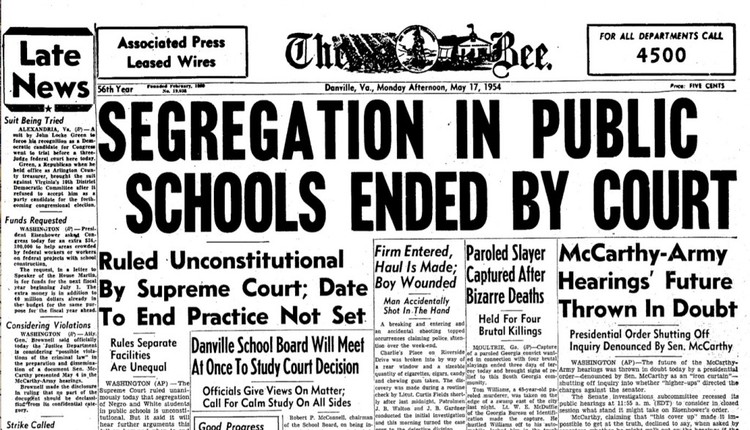


By Sam Francis
05/17/2004
I confess that I have not read and have no intention of reading any of the endless buckets of bilge that have spilled onto op-ed pages in recent days about the glories of the Brown vs. Board of Education decision, the fiftieth anniversary of which is upon us this week.
For every one of the countless hosannas sung to what was probably the most dangerous and destructive Supreme Court decision in American history, there is a good reason to condemn Brown and the men who delivered it.
In many ways, Brown has served as the model by which the Court has gutted every state and local statute, no matter how long-standing or popular, that wanders into its sight.
The state segregation laws at which Brown aimed were merely the first and easiest targets of the new doctrine, but the Court, emboldened by the act of usurpation it had pulled off, soon hunted down others — in the Miranda and Escobedo rulings of the 1960s, which gutted state and local law enforcement powers; decisions banning school prayer; the erasure of state and local laws against sedition and obscenity, capital punishment statutes, laws governing Roe vs. Wade ruling of 1973, which legalized abortion.
This is merely a partial list of the tyranny the Court has succeeded in creating because the American people allowed it to get away with Brown.
But if the constitutional impact of Brown was disastrous, its merits in law don’t even exist. Raymond Wolters, one of the country’s leading scholars of the Brown decision and one of its major critics as well, in a forthcoming article in the Occidental Quarterly writes that
"the rationale of the Court was spurious. Historical research has established that the framers and ratifiers of the Fourteenth Amendment did not intend to outlaw school segregation. It is hardly conceivable that the Congress that submitted the Fourteenth Amendment intended to destroy the various states' right to maintain segregated schools when that very same Congress provided a system of segregated schools in the District of Columbia. Moreover, several of the ratifying states continued to operate segregated schools without perceiving that they were in violation of the amendment.
"The evidence with respect to original intent is so clear that it discouraged even legal historian Alfred Kelly, who was working on Brown for the National Association for the Advancement of Colored People (NAACP). Kelly recalled that 'The problem we faced was not the historian’s discovery of the truth … : the problem instead was the formulation of an adequate gloss to convince the Court that we had something of a historical case.'"
The social science invoked by Brown was equally fraudulent. The Court relied on a psychology experiment that supposedly proved that segregation gave black children feelings of inferiority. The experiment involved all of 16 children in South Carolina. But the psychologist who conducted it, Kenneth Clark, never disclosed that the same tests given to "hundreds of black children who attended segregated schools in Arkansas and unsegregated schools in Massachusetts" showed the opposite result.
If the test "was a valid means of indicating what sort of schooling enhanced black self-respect," writes Professor Wolters, "the data tended to favor segregated schools."
Moreover, the test failed to distinguish the impact of school segregation from that of other kinds of segregation and thus proved nothing about the issue before the Court in Brown. Nor did segregated schools seem to harm other minorities. "The educational success of Asian, Catholic, and Jewish students also casts doubt on the contention that 'isolation inevitably impaired educational development'," Professor Wolters writes.
But the constitutional and scientific flaws of the decision pale before what it has done to American schools, cities, and the people who created them.
By cramming through a legally groundless ruling that authorized the federal engineering of American society, Brown alienated Southern whites for at least a generation, wrecked public education and helped revolutionize both cities and suburbs.
Today, schools once entirely white because of segregation laws are entirely black because of Brown. The white middle class exodus has meant the domination of cities by a black underclass, the crooks and demagogues it puts in office and the financial and social devastation of American urban life.
Has our national ruling class learned anything at all from the blunders of Brown?
For an answer, take a sip of what is being poured onto the pages of your newspapers and magazines this week.
COPYRIGHT CREATORS SYNDICATE, INC.
[Sam Francis is a nationally syndicated columnist. A selection of his columns, America Extinguished: Mass Immigration And The Disintegration Of American Culture, is now available from Americans For Immigration Control. Click here for Sam Francis' website. Click here to orderhis monograph, Ethnopolitics: Immigration, Race, and the American Political Future and here for Glynn Custred’s review.]